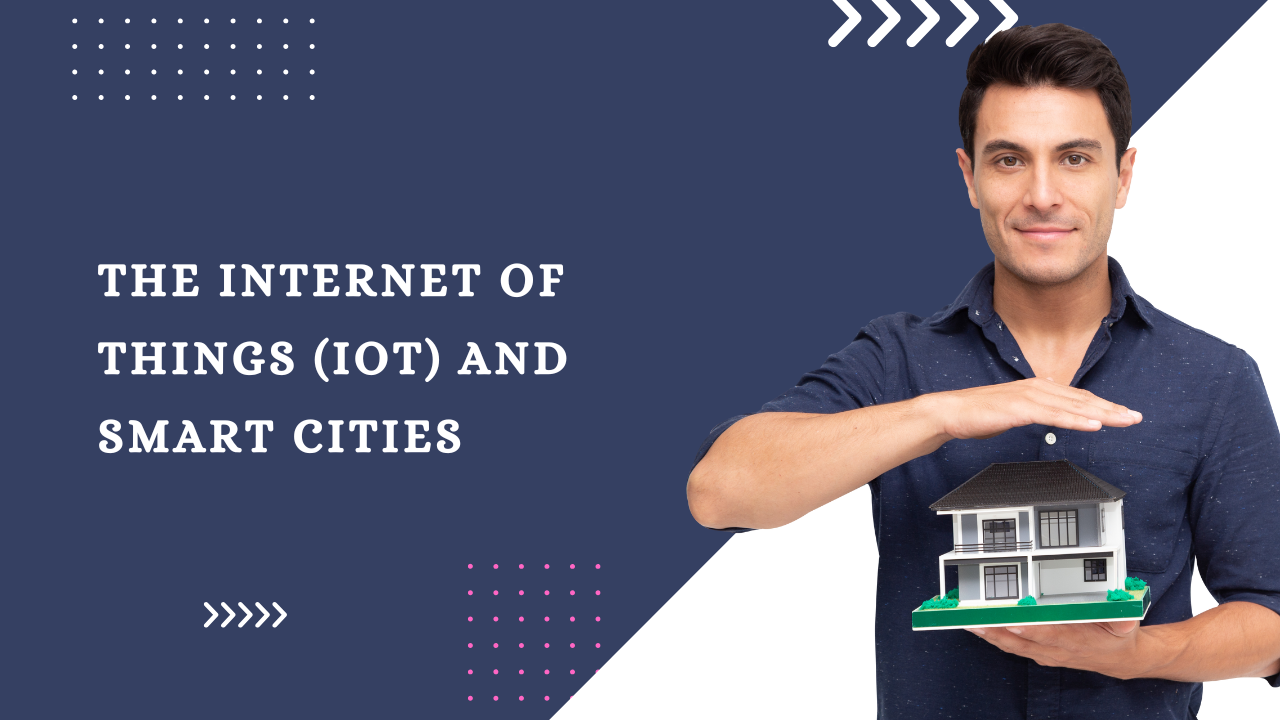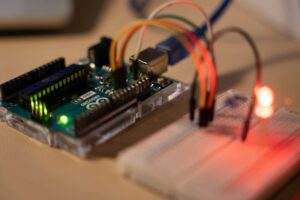Internet of things (IoT) and smart cities:
As cities get bigger and more complicated, there has never been a greater need for smarter, more sustainable ways to live in cities. The Internet of Things, also known as the IoT, is an efficient network of gadgets that can all talk to each other while sharing and gather data in actual time. When IoT is added to the city’s constructions it becomes the foundation of smart communities. This makes it easier to manage resources, improve public services, and make life better for people.
This article talks about how IoT is turning cities into smart ecosystems, the technologies that are making this happen, real-world examples, and the problems we need to solve to make smart cities a reality around the world.
In cities, IoT devices can be built into:
- Lights on the street
- Signals for traffic
- Systems for public transit
- Utility meters
- Systems for managing waste
- Houses and buildings
- IoT makes cities more connected and efficient by letting different systems share data.
The Most Important Things About Smart Cities
Digital technology and the Internet of Things (IoT) are used in a smart city to make infrastructure, public services, and municipal planning better. The goal is to make cities safer, more useful, and better places to live.
Some of the main aspects are:
- Smart transport and traffic control
- Infrastructure that uses less energy
- Systems for collecting and recycling trash automatically
- Public safety systems that are connected
- Smart management of water and utilities
- Platforms for getting citizens involved
How IoT Makes City Life Better
- Better traffic and transportation
Traffic lights, cameras, and cars with IoT sensors give real-time information about accidents, road conditions, and traffic jams. This information is useful for cities:
Change the timing of traffic lights. Give other route options. Allow for changing toll prices. Smart parking systems also help cars find open spots, which cuts down on fuel use and traffic jams. - Good management of water and energy
Smart grids and utility meters let you see how much electricity and water you are using in real time. City planners and residents can keep an eye on usage, find leaks, and make distribution more efficient.
Pros: Less trash and lower energy costs
Lighting and temperature control in buildings that works on its own. - Better safety for the public
IoT-enabled surveillance cameras, emergency response systems, and gunshot detection technology let police and emergency services respond faster and more effectively. Environmental sensors can also keep an eye on radiation, noise levels, and air quality, letting authorities know about possible dangers. - Intelligent Waste Management
Sensors on public trash cans let waste collection providers know when they are full. This helps garbage trucks find the best routes, cut down on overflow, and save money on operations. Some smart cities also include automated hoover waste systems that move trash down tunnels under the ground to central collection locations. - Health and Well-Being
IoT apps in healthcare help keep an eye on long-term illnesses from afar, manage hospital resources, and deal with emergencies. Smart cities use these systems together to make public health better. Wearable devices, air quality monitors, and public health dashboards give people the tools they need to make better choices about their health.
Smart Cities in the Real World
Barcelona, Spain
Barcelona was one of the first cities to embrace smart city technology. It uses the Internet of Things (IoT) for smart street lighting, trash collection, and a city-wide Wi-Fi network. Its smart water technology saves millions of litres of water per year by finding leaks and making irrigation more efficient. Singapore uses a national Smart Nation program that includes IoT-powered transit systems, monitoring the environment, and digital services for citizens. Its Intelligent Transport System helps keep one of the busiest transportation networks in the world running smoothly.
Dubai, United Arab Emirates
Dubai has set up smart police stations, self-driving cars, and cameras that can recognise faces. The Smart Dubai project wants to make all government services digital and paperless.
Problems with smart cities that use IoT
There are a lot of problems that come with developing smart cities, even while the possibilities are huge:
Data privacy and security: The more gadgets you link, the more likely it is that hackers will get into your data. High expenses of implementation: Putting in and keeping up smart infrastructure costs a lot of money.
Problems with integration: Older systems could not work well with new technologies, which might cause problems.
Digital divide: Not everyone has the same access to smart services, which might make socioeconomic differences bigger. Governments, IT corporations, and citizens all need to work together to solve these problems.
The Future of Intelligent Cities
The growth of 5G, edge computing, and AI will speed up the building of smart cities. Some new things that might be out in the future are: Self-driving public transit Language translation in real time for people travelling abroad City planning using AI Identity and voting systems that use blockchain Smart cities may show how to live in communities that are sustainable, open to everyone, and powered by technology if they have the correct leadership and community involvement.
Final Thoughts
The Internet of Things isn’t simply a tech craze; it’s changing how people live in cities. IoT makes it possible to gather and make decisions based on data in real time. This is the first step towards smart cities that are not just better for the environment and more efficient, but also better at meeting the needs of their citizens. The goal of smart, connected, and sustainable cities is becoming more and more possible as more cities adopt IoT technologies. To fully realise the potential of smart cities, though, we need to deal with the problems that come with them and make sure that technological advancement is matched by ethical, open, and safe implementations.


